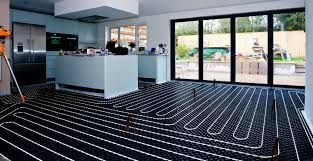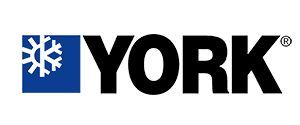EMERGENCY SERVICE
Radiant Floor Heating
Types of Radiant Floor Heating Systems
Electric Radiant Floor Heating
How Electric Systems Work
Electric radiant floor heating systems utilize heating cables or mats that are embedded in the flooring material. When powered on, these cables or mats generate heat, which is then radiated through the floor. Electric systems are often used in smaller spaces or as supplemental heating.
Advantages and Disadvantages
Electric systems are generally easier and quicker to install compared to hydronic systems. They also offer precise control over heating zones and are ideal for retrofitting in existing homes. However, they can be more expensive to operate over time, especially in larger areas.
Hydronic Radiant Floor Heating
How Hydronic Systems Work
Hydronic radiant floor heating involves circulating heated water through a network of tubing installed beneath the floor. A boiler or other heating source heats the water, which then travels through the tubing, warming the floor surface. This type of system is typically used in larger installations or new constructions.
Advantages and Disadvantages
Hydronic systems are known for their energy efficiency and lower operating costs compared to electric systems. They are well-suited for larger areas and can be integrated with other heating sources, such as solar panels or geothermal systems. However, they require more complex installation and are generally more expensive upfront.
WHY CHOOSE US?
Radiant Floor Heating Services
Introduction to Radiant Floor Heating Services
What is Radiant Floor Heating?
Radiant floor heating is an advanced heating solution that involves installing heating elements beneath the floor surface to provide consistent, even warmth throughout a room. Unlike traditional heating systems that rely on air circulation, radiant floor heating directly warms the floor, which then radiates heat upwards, creating a comfortable and efficient heating environment.
Benefits of Radiant Floor Heating
Radiant floor heating systems offer numerous advantages, including enhanced comfort, energy efficiency, and improved air quality. Unlike conventional heating methods that can create uneven temperatures and drafts, radiant systems provide a consistent warmth that feels gentle and even. Additionally, because they operate at lower temperatures, they can help reduce energy consumption and lower heating bills.

Choosing the Right Radiant Floor Heating System
Factors to Consider
When selecting a radiant floor heating system, several factors should be considered, including the size and layout of the area, energy efficiency, and cost. Each type of system has its unique benefits and considerations, making it important to evaluate your specific needs and preferences.
Size and Layout of the Area
The size and layout of the space to be heated will impact the choice of system. For smaller areas or individual rooms, electric systems may be more practical. For larger areas or whole-home installations, hydronic systems might be a better fit.
Energy Efficiency and Costs
Consider the long-term operating costs and energy efficiency of the system. While electric systems may have lower initial costs, hydronic systems often offer greater energy savings over time. Evaluating the total cost of ownership, including installation and operating expenses, can help in making an informed decision.
Comparing Electric vs. Hydronic Systems
Electric and hydronic systems each have their advantages and disadvantages. Electric systems offer ease of installation and control, while hydronic systems provide energy efficiency and suitability for larger spaces. Comparing these factors will help determine the best option for your needs.
Installation of Radiant Floor Heating Systems
Pre-Installation Considerations
Site Preparation
Proper site preparation is essential for a successful installation. This includes ensuring that the subfloor is clean, dry, and level. Adequate insulation should also be in place to maximize the efficiency of the heating system.
Permits and Regulations
Installation of radiant floor heating systems may require permits and adherence to local building codes. It’s important to check with local authorities to ensure compliance and avoid any legal issues.
Professional Installation vs. DIY
Pros and Cons of Professional Installation
Hiring a professional for the installation of radiant floor heating systems ensures that the job is done correctly and efficiently. Professionals bring expertise and experience, reducing the risk of errors and ensuring optimal performance. They also provide warranties and can handle any issues that arise during installation.
DIY Installation Tips
For those considering a DIY approach, it’s important to thoroughly research and understand the installation process. DIY installation can be cost-effective but requires careful planning, attention to detail, and adherence to safety guidelines.

Post-Installation Care and Maintenance
Regular Maintenance Practices
Routine maintenance of radiant floor heating systems involves checking for any signs of wear and tear, ensuring that the system is functioning correctly, and cleaning any components as needed. Regular maintenance helps extend the life of the system and ensures reliable performance.
Troubleshooting Common Issues
Common issues with radiant floor heating systems include uneven heating, malfunctioning thermostats, and leaks in hydronic systems. Identifying and addressing these issues promptly can prevent more significant problems and ensure that the system operates efficiently.
Cost and Budgeting
Installation Costs
The cost of installing radiant floor heating systems varies based on factors such as the type of system, the size of the area, and the complexity of the installation. Obtaining detailed estimates and planning your budget can help manage costs effectively.
Long-Term Operating Costs
Operating costs for radiant floor heating systems depend on factors such as energy consumption and system efficiency. While electric systems may have higher operating costs, hydronic systems are often more energy-efficient and cost-effective in the long run.
Return on Investment
Investing in a radiant floor heating system can enhance comfort, increase property value, and reduce energy bills. Evaluating the return on investment involves considering both the initial costs and the long-term benefits of the system.
FAQs about Radiant Floor Heating Services
How does radiant floor heating work?
Radiant floor heating systems work by warming the floor surface through electric cables or heated water circulating in tubes. The heat radiates upward, creating a consistent and comfortable temperature in the room.
What are the benefits of installing radiant floor heating?
Benefits include enhanced comfort, energy efficiency, and improved air quality. Radiant floor heating provides even warmth without drafts and can reduce heating bills by operating at lower temperatures.
Would You Like to Know More?
We have a simple mission, to become the best provider of HVAC services in the major metropolitan area. We have been working nonstop, providing excellent customer service at competitive prices. If you would like to know more about our services and our track record in your city, give us a call today!
























